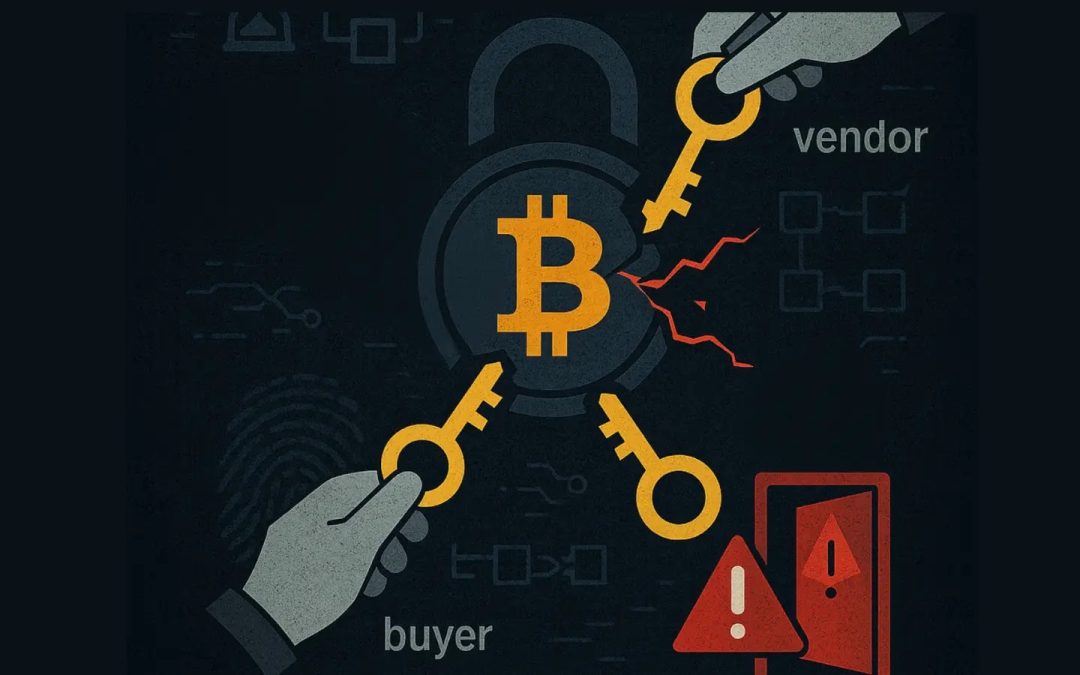“`html
Darknet bazaars, functioning outside the grasp of conventional payment processors and legal frameworks, depend on escrow mechanisms to safeguard cryptocurrency exchanges between purchasers and sellers.
These mechanisms, incorporating multisignature wallets and automated release protocols, strive to guarantee transaction safety and aid in conflict resolution.
Nonetheless, weaknesses in centralized dispute resolution systems and the continuous risk of exit scams emphasize considerable dangers, as explored in a recent evaluation of darknet market activities.
Multisig Escrow: Striking a Balance Between Security and Trust
Contemporary darknet marketplaces frequently utilize multisignature (multisig) escrow frameworks, generally employing a 2-of-3 signature configuration involving the purchaser, seller, and marketplace administrator.

When a purchaser makes an order, funds become secured in a multisig address requiring two signatures for release—typically the buyer and seller for successful trades, with the administrator intervening for disputes. This arrangement prevents any individual party from unilaterally accessing funds, providing enhanced security compared to centralized escrow systems where marketplaces manage funds directly.
According to Sam Bent Report, in a standard transaction, the market platform creates the multisig address, distributing private keys between the purchaser and seller, although some marketplaces permit users to provide their own keys for additional control. Successful transactions involve buyers and sellers signing off to release funds to the seller without administrator intervention.

In conflicts, administrators use their key to distribute funds based on evidence such as shipping confirmations or product images. While multisig wallets diminish the risk of funds theft if market servers are compromised, they still depend on trust in administrators for impartial dispute resolution and require users to protect their private keys.
Automated Timers and Exit Scam Risks
To enhance operations, numerous darknet markets implement automated escrow release systems, shifting funds to sellers after 7 to 21 days unless purchasers raise disputes.
These timers are shorter for domestic orders and extended for international deliveries, presuming buyers will receive products within the set duration and only challenge problematic transactions.
Buyers have the option to manually release funds earlier upon satisfactory arrival, aiding sellers with quicker payouts, while graduated release systems for larger orders offer partial payments to sellers while safeguarding buyers.
However, these automated systems place the onus on buyers to monitor orders to raise issues before deadlines, and prolonged escrow durations can affect seller liquidity or entice administrators into exit scams, where they abscond with all escrowed funds. Historical data reveals exit scams predominantly characterize darknet market shutdowns, frequently synchronized with high escrow volumes, such as during holiday seasons.
The centralized dispute resolution mechanism, dependent on administrators assessing evidence, introduces risks of bias or corruption, as administrators earn fees from transactions and resolutions, potentially skewing decisions in favor of market stability over fairness.
The necessary trust invested in administrators, combined with the anonymity of darknet marketplaces, renders users susceptible to systemic theft, prompting many to prefer direct transactions with trusted sellers or limit escrow utilization to mitigate losses.
As darknet markets maneuver the delicate balance between security and operational efficacy, the persistent threat of exit scams emphasizes the urgent need for decentralized solutions to lessen dependence on centralized trust frameworks.
“`

